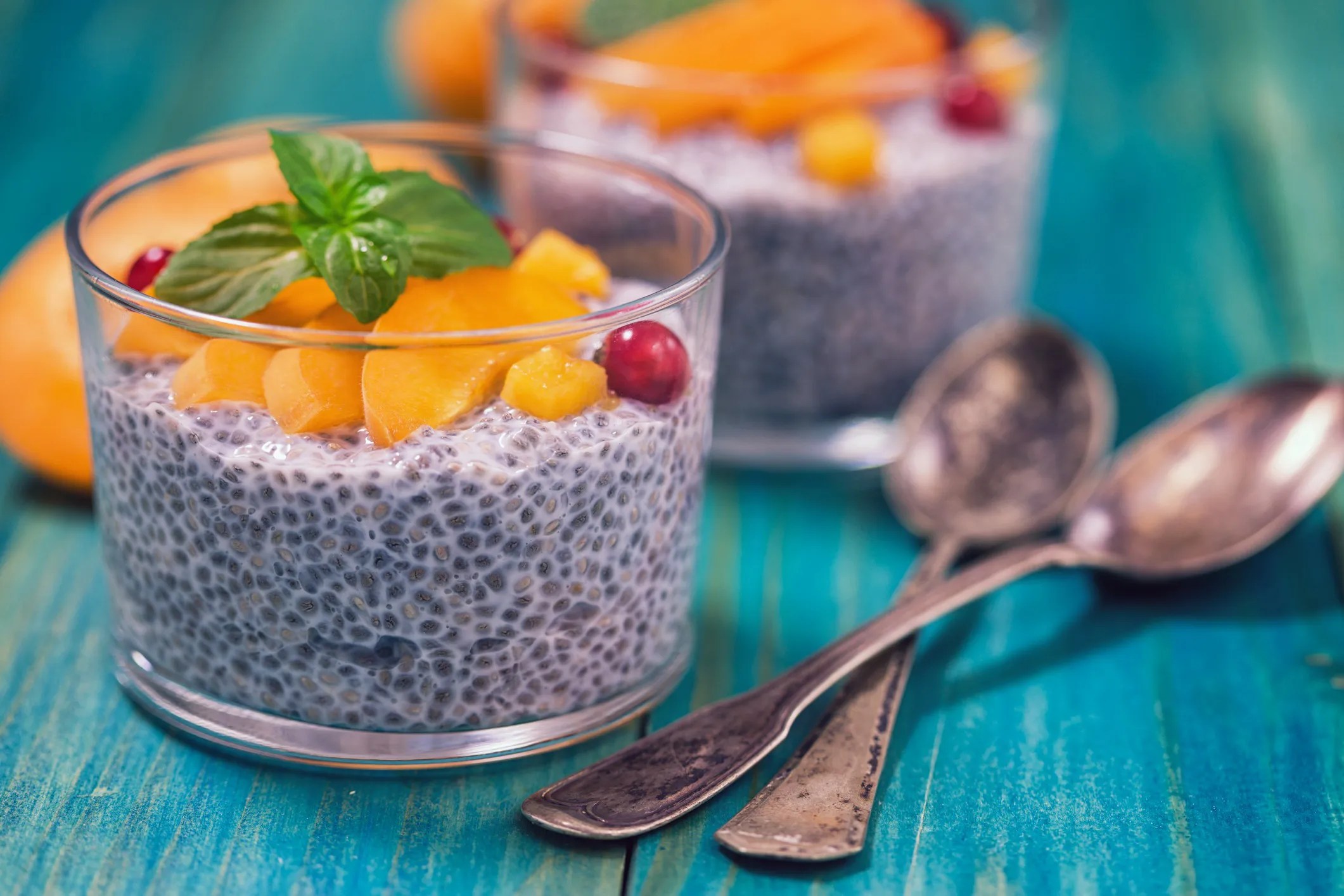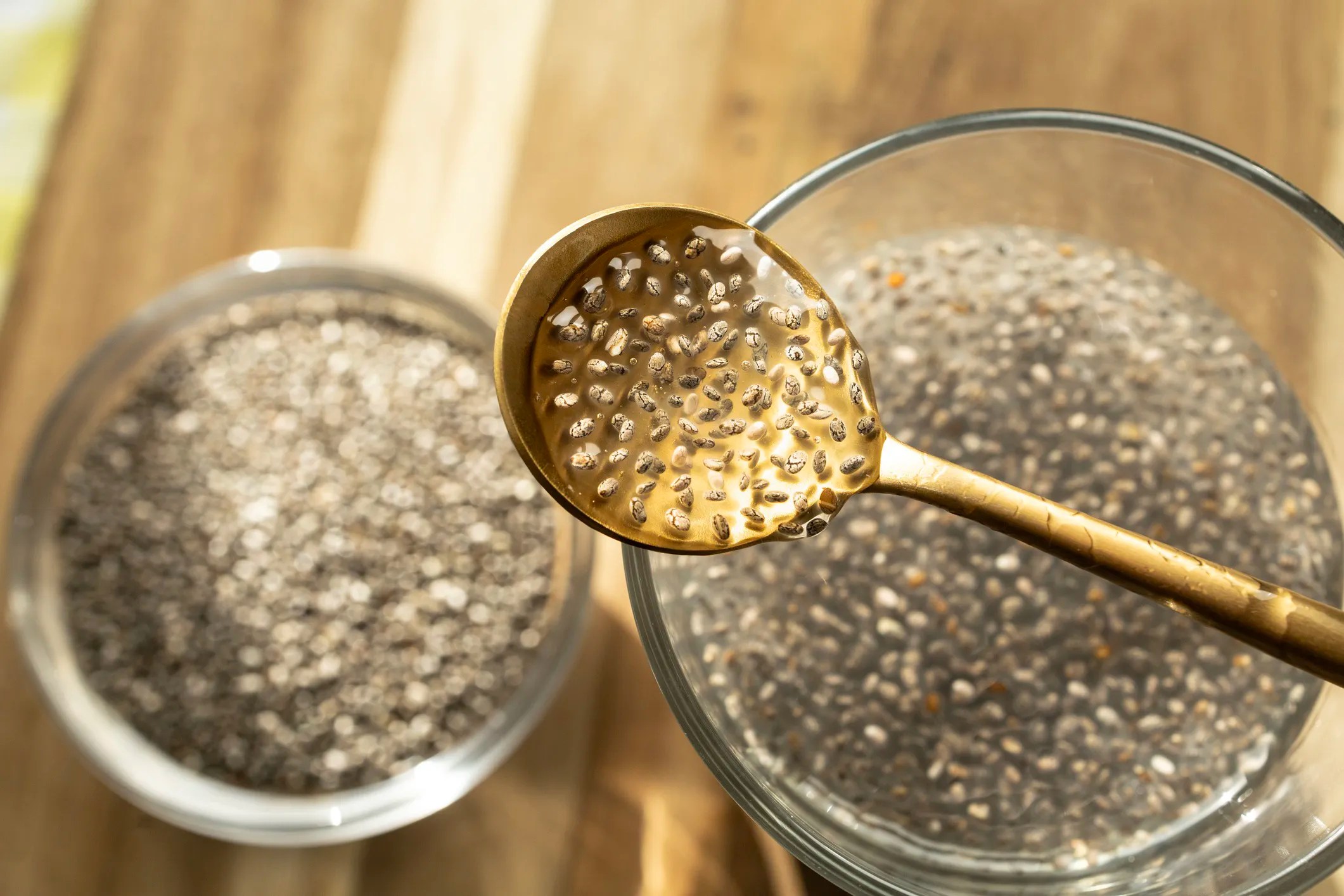Chia Seed Benefits: What You Need to Know

As a staple food for the Aztecs and Mayans, chia seeds have been a part of the human diet for over 5,000 years. Despite their size, these tiny seeds are mighty with nutrition. Chia seeds are loaded with fiber, protein, omega-3 fatty acids, and other micronutrients. Perhaps it is no surprise that throughout centuries chia seeds have remained a staple source of nutrients for our diets.
What Are Chia Seeds?
Chia seeds are tiny edible black, brown, or white seeds derived from the Salvia hispanica plant, a member of the mint family native to Mexico and Guatemala. They are a popular superfood known for their high nutritional value.
What Are the Health Benefits of Eating Chia Seeds?
Chia seeds are nutritional powerhouses—rich in fiber, protein, omega‑3 fatty acids (especially alpha‑linolenic acid, ALA), antioxidants, vitamins, and minerals—and research is increasingly showing how chia seeds deliver multiple health benefits:
Reducing Blood Pressure
Meta‑analyses of randomized controlled trials (RCTs) have found that consuming chia seeds can significantly lower both systolic and diastolic blood pressure. For example, eight RCTs involving about 372 participants showed average reductions of ~5.6 mmHg in systolic blood pressure and ~7.5 mmHg in diastolic blood pressure.
In people with type 2 diabetes, consuming 40 g/day of chia for 12 weeks led to a significant drop in systolic blood pressure compared to controls.
Lowering Cholesterol Levels
Chia seed supplementation has been shown to improve lipid profiles by lowering “bad” LDL cholesterol and triglycerides. A meta‑regression of 14 trials with 835 participants found significant reductions in triglycerides across doses, and in LDL when the chia dose was higher.
Supporting Digestive Health
High fiber (both soluble and insoluble) in chia seeds helps with digestive regularity, adds bulk to stools, and slows down digestion, which can reduce spikes in blood sugar after meals. Also, a study where healthy subjects consumed chia seed mixed into yogurt as a mid‑morning snack found increased satiety and reduced energy intake at a later meal.
Aiding Weight Management
Because chia seeds swell when soaked (thanks to soluble fiber), they promote feelings of fullness (satiety), which may help reduce overall calorie intake. The same mid‑morning snack study showed that 7 g or 14 g chia added to yogurt reduced hunger and lowered subsequent calorie consumption.
In overweight individuals, regular chia consumption has been linked to reductions in waist circumference.
Reducing Inflammation
Chia seeds are rich in antioxidants and omega‑3s, both of which help modulate inflammatory pathways. A meta‑analysis of RCTs found that chia consumption significantly reduces levels of C‑reactive protein (CRP), an inflammatory marker, though effects on other markers like interleukin‑6 (IL‑6) or tumor necrosis factor‑alpha (TNF‑α) are less consistent.
Helping to Control Diabetes
The fiber and healthy fat in chia slow down carbohydrate absorption, help moderate postprandial blood sugar spikes, and improve insulin sensitivity in some animal studies. Human studies show that chia can lower post‑meal blood glucose in healthy and prediabetic individuals.
Protecting Against Chronic Disease
Due to their combined effects on blood pressure, cholesterol, inflammation, and glycemic control, chia seeds are considered helpful in reducing risk factors for cardiovascular disease. Their antioxidant compounds also help reduce oxidative stress, which plays a role in many chronic diseases. A review on chia’s “functional components” highlights its potential in diseases such as CVD, diabetes, liver disease, and some cancers.
Chia Seed Mucilage: A Natural Gel Rich in Soluble Fiber and Health Benefits
A gel forms around the chia seed when mixed with liquid, which gives chia beverages their distinctive texture. This is known as chia seed mucilage: a water-soluble, gel-like coating that forms around chia seeds when they are soaked in water, primarily composed of soluble fiber. Chia seeds contain about 5–6% mucilage, a soluble dietary fiber. This viscous substance acts as a natural thickener, is rich in beneficial polysaccharides and dietary fibers, and offers potential health benefits, such as regulating satiety, lowering the glycemic index of foods, and improving gut health.

Why Is Chia Seed Mucilage Tested?
Chia seed mucilage is tested to evaluate its effectiveness as a natural ingredient in various industries due to its desirable technological properties (such as thickening, emulsifying, and stabilizing), biological activities (like prebiotic effects), and physicochemical characteristics (like water absorption and resistance to thermal treatment). To assure its safe and effective application, standardized testing methods are employed.
For instance, ASTM D882-10, which covers a test method for the tensile properties of thin plastic sheeting, has been used to assess the mechanical strength of edible films derived from chia seed mucilage. For example, a study conducted by Science Direct used ASTM D882-10 to extract the mucilage of chia seeds; in another research study conducted by the National Library of Medicine (NLH), the mechanical properties of chia films were determined according to the procedure described in the standard ASTM D882-10.
Similarly, ASTM E96, the standard test method for water vapor transmission, has been used to measure the permeability of these films. Specifically, a modified version of its gravimetric “cup method” has been used to determine the water vapor permeability of edible films made from chia seed mucilage as seen in a study conducted by Science Direct, which determined that chia mucilage can be used as edible packaging or coating material. Essentially, this means that the slimy, gel-like substance extracted from chia seeds can be processed into a natural, biodegradable material to either coat food items or be made into edible packaging. This provides an eco-friendly alternative to synthetic packaging materials like plastics, and it can help preserve the food it contains.
These evaluations are crucial in confirming the mucilage’s suitability as a sustainable and biodegradable alternative to synthetic ingredients in food products, cosmetics, and even agricultural applications.
International Standards for Chia Seed Testing
To assure the quality, safety, and nutritional value of chia seeds and their derived products, a range of internationally recognized ISO standards are applied throughout their processing and analysis.
For instance, ISO 12966-2 is utilized to prepare fatty acid methyl esters (FAMEs) for determining the fatty acid profile of chia seed oil, a key indicator of its nutritional composition. The standard includes methods for preparing FAMEs from animal and vegetable fats and oils. In a study conducted by the National Institute of Health (NIH), the fatty acids in chia cakes and seeds were derivatized to FAMEs via basic transmethylation, according to ISO 12966-2. The NIH study found that chia seeds presented a significantly higher energy value than cake (444 vs. 284 kcal/100 g, respectively) due to fat removal, and that chia cake is a promising high-protein, high-fiber food ingredient.
In processing facilities, ISO 22000 provides a framework for food safety management systems, helping to control hazards and assure consumer safety. Microbiological safety is addressed through ISO 6579-1, which outlines procedures for detecting Salmonella spp., a critical pathogen in food products. Additionally, moisture content — a key factor in shelf life and quality — is assessed using methods based on ISO 665 and ISO 712. To manage risks related to contamination, ISO 16050 is used to test for aflatoxins, toxic compounds that can be harmful even in small amounts.
Together, these standards play a crucial role in maintaining the safety, integrity, and marketability of chia seeds across global supply chains.






